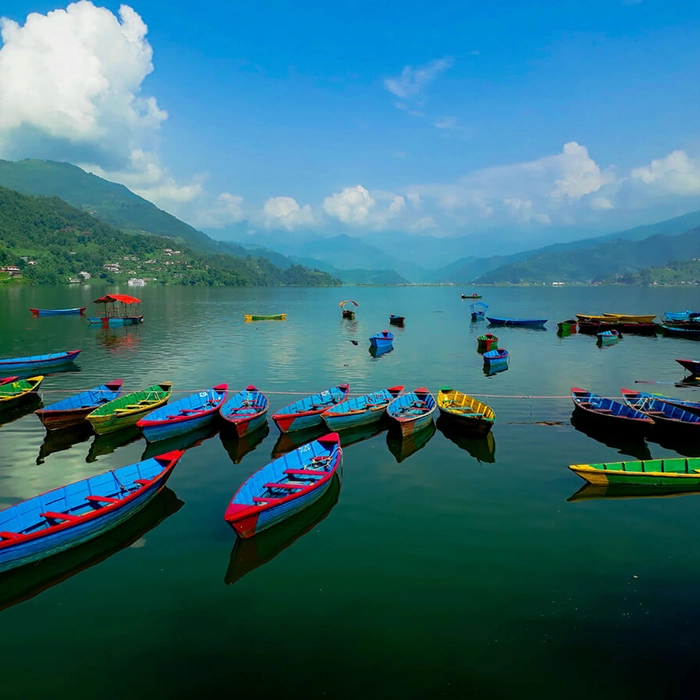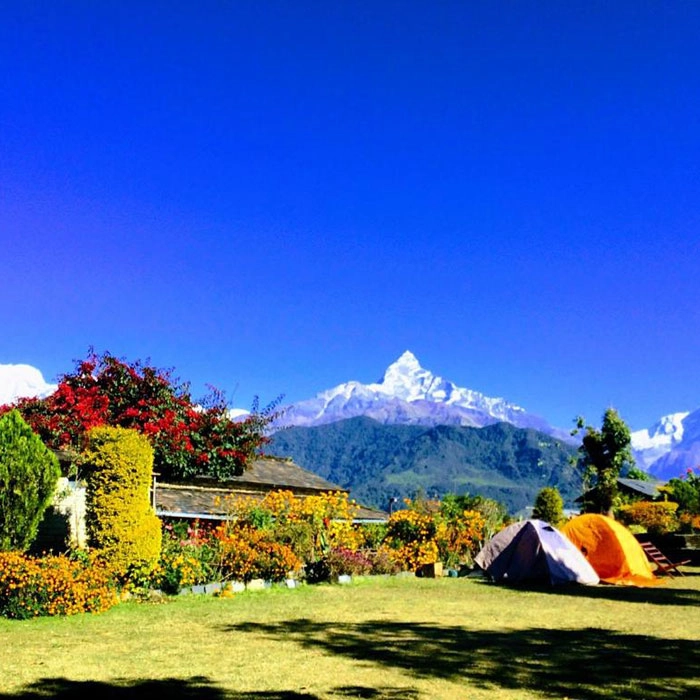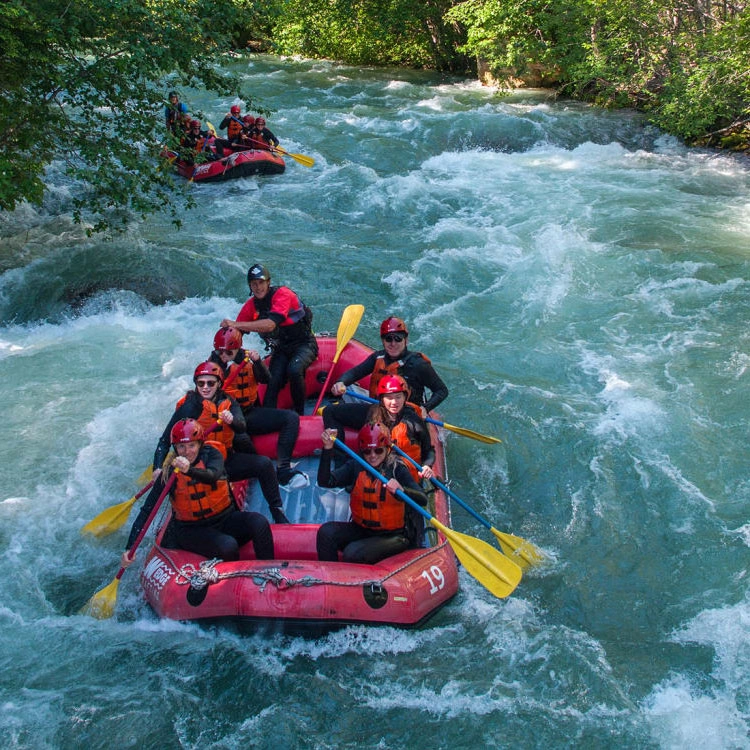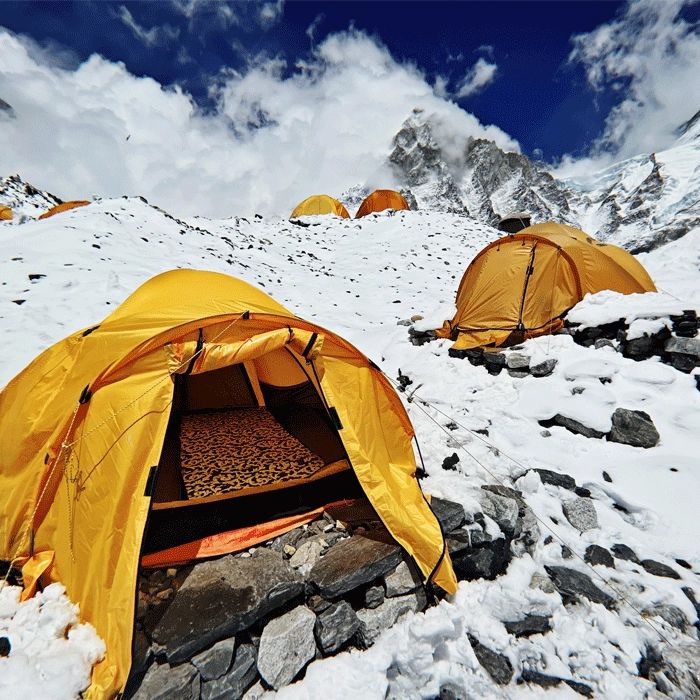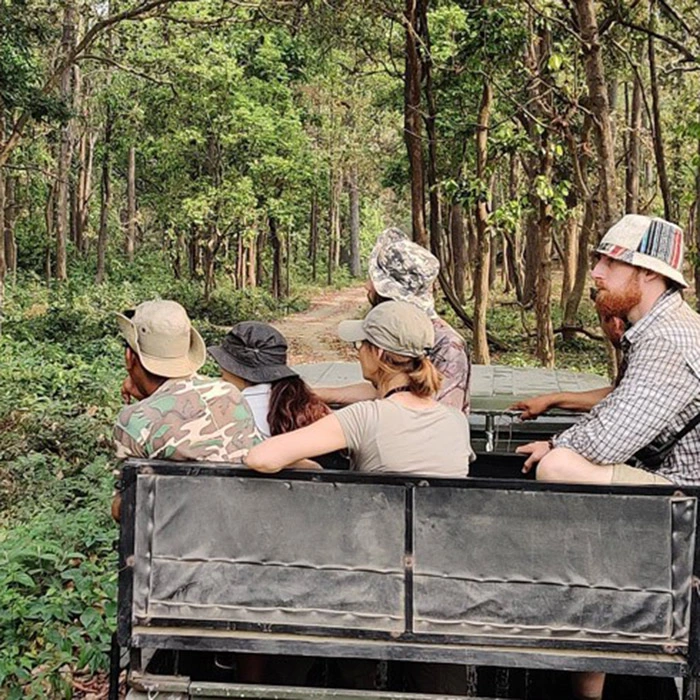MAKALU BASE CAMP TREK
US$0.00
/pp
-
20 Days
-
Makalu
-
Spring/Autumn
-
Trekking
-
5,150 Meters
-
Hard
-
Car / Plane
-
02-16 People
-
JH#275
 Overviews
Overviews
The Makalu Base Camp Trek offers stunning views of the fifth-highest mountain, diverse Himalayan landscapes, and incredible natural beauty. This trek immerses you in one of Nepal’s most secluded and pristine regions, showcasing the unblemished grandeur of the Himalayas, brought to you by Jagadamba Holidays.
The Makalu Base Camp adventure begins in Tumlingtar, a quaint town where your journey starts. From here, you ascend through lush forests, terraced fields, and picturesque villages, each showcasing the region’s rich cultural tapestry. As you continue into the Makalu Barun National Park, you will traverse through a variety of ecosystems, encountering a diverse array of wildlife, including the elusive snow leopard and the rare red panda. The park’s landscapes are equally spectacular, featuring majestic waterfalls, deep gorges, and vibrant rhododendron forests.
A standout feature of Makalu Base Camp trek is the breathtaking view of Mount Makalu, standing at 8,485 meters as the world’s fifth-highest peak. The journey to the base camp is both challenging and rewarding, offering high-altitude terrain adorned with glacial lakes and snow-capped peaks. The base camp itself presents a dramatic and unforgettable panorama, providing trekkers with a profound sense of accomplishment and awe.
Throughout Makalu Base Camp trek, you will interact with local Sherpa and Rai communities, gaining valuable insights into their traditional way of life. Their warm hospitality, coupled with the trek’s stunning natural surroundings, creates a rich and immersive experience. Additionally, the trek provides excellent opportunities for photography, capturing the dynamic beauty of the changing landscapes.
The Makalu Base Camp Trek is not merely a test of endurance; it is a transformative journey that allows trekkers to leave behind daily routines and establish a profound bond with the natural world. Whether you are an experienced trekker or a nature enthusiast, this trek promises an extraordinary adventure filled with breathtaking views, cultural encounters, and lasting memories.
Makalu Base Camp Trek Difficulty
The Makalu Base Camp Trek is considered a strenuous and remote trek, ideal for experienced trekkers looking for a true off-the-beaten-path Himalayan adventure. The trail involves long and challenging hiking days, rough terrain, steep ascents and descents, and altitudes reaching up to 5,000 meters (16,404 ft) at the base camp. Limited teahouse infrastructure and fewer trekkers make the journey more isolated, requiring a high level of physical fitness, endurance, and mental resilience. No technical climbing is required, but prior high-altitude trekking experience is highly recommended. This trek rewards adventurers with breathtaking wilderness, diverse ecosystems, and unspoiled mountain views.
Makalu Base Camp Cost
The Makalu Base Camp Trek cost typically includes a licensed trekking guide, porter assistance, necessary permits (Makalu Barun National Park and conservation area), teahouse or camping accommodation, meals during the trek, and all ground transportation to and from the trailhead.
Solo trekkers receive dedicated, personalized support, while groups benefit from tiered discounts, with rates per person decreasing as the group size increases.
We also offer exclusive seasonal promotions during off-peak months, making this remote Himalayan expedition more accessible. While our website lists standard global prices, you’re encouraged to reach out directly for private group bookings, where we’ll offer a customized quote—ensuring you receive the best possible price without compromising on service quality.
 Itinerary (Plan)
Itinerary (Plan)
Arrive in Kathmandu, Nepal's vibrant capital, where you'll be warmly welcomed with marigold garlands. After transferring to your hotel, take time to relax and acclimate to the bustling city. Discover vibrant local markets, indulge in traditional Nepali dishes, and delve into Kathmandu's rich cultural tapestry. This initial day is perfect for easing into your journey, setting the stage for the exciting adventures ahead in Eastern Nepal. A representative from Jagadamba Holidays will ensure a smooth and pleasant arrival.
Optional Evening Activity:
If you wish, you can spend your evening experiencing the Pashupatinath Aarti, a captivating religious ceremony held at the Pashupatinath Temple. The Aarti usually begins around 6:00 PM and lasts for approximately an hour. This ceremony is a mesmerizing display of traditional music and rituals, providing a profound insight into Hindu spiritual practices. Please check the exact time for the Aarti on the day of your visit, as it may vary. This option is not included in the standard itinerary but offers a unique opportunity to immerse yourself in local culture.
Begin your journey with a breathtaking scenic flight from Kathmandu to Tumlingtar Airport (518 m / 1,699 ft). As the plane ascends, enjoy aerial views of terraced hillsides, winding rivers, and distant Himalayan peaks peeking through the clouds. This flight sets the tone for your Makalu region adventure, immersing you in Nepal’s serene landscapes and offering your first glimpse of the eastern Himalayas’ unique charm. From Tumlingtar, continue by road to Num Village (1,560 m / 5,118 ft), passing through traditional villages, terraced farmland, and small hamlets where local life moves at a gentle, unhurried pace. The drive covers 45.5 kilometres over 4 to 5 hours and is considered easy to moderate, with gentle inclines and rolling hills providing a comfortable journey while also hinting at the rugged terrain of the Makalu trekking route. The road follows the Arun Valley, allowing a gradual immersion into Nepal’s mountainous environment and a smooth acclimatization for the trek ahead. Arrive at Num Village and check in at Sherpa Hotel, your first resting spot in the Makalu region. The village is tranquil, surrounded by forested hills and terraced fields, where the local lifestyle is deeply connected to nature. The evening is ideal for a peaceful walk around the village, observing farm activities, greeting local families, and watching the sunset over the Arun Valley, offering a meditative and relaxing start to your Lumba Sumba Pass Trek.
After a hearty breakfast in Num Village, begin the trek towards Seduwa (1,500 m / 4,921 ft). The route gently climbs along the Arun River, passing through terraced fields and traditional rural settlements. As you ascend, enjoy panoramic views of the Arun Valley, dotted with wooden houses and colorful prayer flags. The trail winds through rhododendron and oak forests, providing shade, opportunities to spot local birds, and occasional encounters with wildlife, offering an immersive introduction to the Himalayan ecosystem. The trek covers 8 kilometres in 6 to 7 hours, with an ascent of 850 metres (2,789 ft) and a descent of 750 metres (2,461 ft). The path is moderately challenging, featuring occasional steep sections balanced with flatter stretches that allow you to pause, breathe, and appreciate the scenery. A suspension bridge over the Arun River adds a touch of adventure and emphasizes your connection to the natural rhythm of the valley. Upon arrival in Seduwa, check in at Makalu Barun Hotel, a welcoming lodge that reflects the serene charm of the Makalu region. The village, with its wooden homes and terraced farmland, offers a tranquil environment. In the evening, take time to interact with local Sherpa communities, listen to the gentle sounds of nearby streams, and reflect on your first day of trekking while admiring the snow-capped peaks in the distance.
After a hearty breakfast in Seduwa, begin the trek towards Tashigaon (2,175 m / 7,136 ft), passing through a mosaic of terraced fields, lush rhododendron forests, and tranquil hamlets. The trail ascends steadily, offering intermittent views of surrounding peaks, distant glaciers, and river valleys. This combination of natural beauty and traditional village life provides an immersive experience, where each step is accompanied by the rustle of forest leaves and occasional sightings of grazing yaks or local wildlife. The trek covers 8 kilometres in 5 to 6 hours, with an ascent of 500 metres (1,640 ft) and a minor descent of 30 metres (98 ft). The route is moderately challenging, providing an excellent opportunity for gradual acclimatization while still delivering the satisfaction of a steady uphill climb. The trail passes through small villages, open fields, and forested slopes, blending cultural encounters with scenic exploration. Periodic stops allow trekkers to admire surrounding peaks, observe local wildlife, and fully appreciate the tranquil Himalayan environment. Arrive at Tashigaon, a quiet settlement nestled among verdant slopes, and check in at Makalu Barun Hotel Tashigaon. The village offers a sense of seclusion and serenity, with views of distant snow-capped peaks. Take time to stroll along village paths, interact with locals, and immerse yourself in the peaceful alpine atmosphere, knowing you are steadily progressing deeper into the high Himalayas.
After a hearty breakfast in Tashigaon, embark on a challenging but spectacular trek towards Khongma Danda (3,637 m / 11,926 ft) via Kauma La (3,200 m / 10,499 ft). The trail ascends through dense rhododendron and oak forests, opening occasional clearings where Himalayan peaks emerge above the treetops. As you traverse ridges and forested slopes, the remoteness of this high-altitude region becomes evident, offering dramatic views of valleys and distant villages. The trek spans 7 kilometres in 6 to 7 hours, with an ascent of 1,490 metres (4,888 ft) and a minor descent of 30 metres (98 ft). The route is physically demanding, with steep climbs requiring careful pacing and stamina, yet the trail rewards trekkers with breathtaking panoramas at every turn. Crossing Kauma La pass provides one of the most exhilarating moments of the day, unveiling panoramic Himalayan vistas. Arrive at Khongma Danda and check in at Shiva View Hotel, a lodge perched amid high ridges and peaceful alpine scenery. The evening offers an ideal opportunity for reflection and appreciation of the surrounding peaks, providing a profound sense of accomplishment and immersion in the pristine Himalayas.
After a hearty breakfast in Khongma Danda (3,637 m / 11,926 ft), take a well-earned rest and acclimatization day in this serene high-altitude settlement. The day provides an excellent opportunity to adjust to the altitude, ensuring you are well-prepared for the more demanding trekking stages ahead. Gentle walks around the village and nearby trails allow you to absorb the tranquility of the Makalu region and enjoy panoramic views of the Makalu (8,481 m / 27,838 ft) and Barun ranges without the strain of a full day’s trek. For those wishing to remain active, short hikes to Khongma Ri (3,750 m / 12,303 ft) or nearby ridges offer easy terrain with minimal altitude gain, providing further acclimatization while allowing you to observe alpine flora, local wildlife, and the soothing sounds of mountain streams. The scenic trails around Khongma showcase stunning vistas of the Makalu Range and surrounding Himalayan peaks, giving trekkers both adventure and gentle exploration. The peaceful environment of Shiva View Hotel encourages relaxation and reflection. The village’s solitude, framed by majestic mountain vistas, provides a mental and physical reset, allowing you to reflect on your journey so far. Spend the evening watching the changing light on distant peaks, enjoying the calm rhythm of Himalayan life, and rejuvenating for the challenging passes ahead. This day perfectly balances rest, acclimatization, and scenic immersion, making it an essential part of the Lumba Sumba Pass Trek experience.
After a hearty breakfast in Khongma Danda, embark on a challenging trek towards Dobate (3,862 m / 12,667 ft), crossing the two high mountain passes of Tutu La (4,125 m / 13,533 ft) and Keke La (4,170 m / 13,681 ft). The trail ascends through alpine meadows, glacial streams, and rugged ridges, offering sweeping views of snow-capped peaks, Himalayan valleys, and the remote Makalu region. As you traverse exposed ridges and high-altitude terrain, the dramatic landscapes and isolation of this region provide a truly off-the-beaten-path trekking experience. The trek spans 7 kilometres in 6 to 7 hours, with an ascent of 750 metres (2,460 ft) and a descent of 490 metres (1,608 ft). The route is physically demanding, requiring careful footing, good stamina, and focus, yet the trail rewards trekkers with breathtaking panoramic vistas, high-altitude adventure, and the unforgettable experience of crossing Himalayan passes. Tutu La and Keke La passes offer some of the most spectacular viewpoints on the entire Makalu trekking route. Arrive at Dobate and check in at Dobate Hotel & Lodge, situated amidst alpine meadows and dramatic cliffs. The evening provides an opportunity for relaxation, reflection, and enjoying the serene high-altitude wilderness, giving trekkers a profound sense of accomplishment and immersion in the pristine Himalayan environment.
After a hearty breakfast in Dobate, set out on a scenic descent towards Yangle Kharka (3,537 m / 11,601 ft), venturing deeper into the tranquil Barun Valley. The trail winds through waterfalls, alpine meadows, and rhododendron forests, offering a serene and immersive high-altitude trekking experience. Occasional glimpses of distant glaciers and cliffs create captivating vistas, while the gentle murmur of streams enhances the peaceful atmosphere of this remote Himalayan region. The trek spans 9 kilometres in 6 to 7 hours, with an ascent of 340 metres (1,115 ft) and a descent of 560 metres (1,837 ft). The terrain is moderately challenging, featuring forest sections, open meadows, and rolling hills, allowing trekkers to enjoy both physical exertion and the untouched natural beauty of the Makalu-Barun region. Arrive at Yangle Kharka Lodge, a secluded and tranquil campsite surrounded by alpine greenery and dramatic cliffs. Relax and soak in the serene environment, observe the changing light on surrounding peaks, and immerse yourself in the soothing sounds of the Barun Valley, preparing for the next stage of your Makalu high-altitude adventure.
After a hearty breakfast in Yangle Kharka, continue your trek towards Langmale Kharka (4,410 m / 14,469 ft), passing through alpine meadows dotted with wildflowers and glacial streams. The trail opens to expansive views of surrounding snow-capped peaks, while the serene atmosphere of the high Himalayas provides an immersive nature and trekking experience. The trek spans 8 kilometres in 6 to 7 hours, with an ascent of 780 metres (2,559 ft) and a descent of 10 metres (33 ft). The route is moderately challenging, featuring occasional steep sections, yet the combination of alpine scenery, open pastures, and high-altitude landscapes makes the journey highly rewarding. Along the way, trekkers may spot Himalayan birds, grazing yaks, and other alpine wildlife, enhancing the sense of remoteness and connection with the pristine environment. Arrive at Langmale Kharka Teahouse, a peaceful resting spot offering panoramic views of snow-capped peaks. The tranquil alpine surroundings provide an excellent opportunity to acclimatize, relax, and appreciate the raw beauty of the Makalu region before proceeding towards Makalu Base Camp.
After a hearty breakfast in Langmale Kharka, begin your trek towards Makalu Base Camp (4,870 m / 15,978 ft), entering a dramatic high-altitude environment of rocky moraines, glacial streams, and open tundra. The trail quickly immerses you in the rugged beauty of the Makalu-Barun National Park, where towering peaks and vast valleys unfold against a backdrop of deep blue skies. With each step, the silhouette of Mount Makalu, the fifth-highest peak in the world, grows more pronounced, heightening the sense of adventure and anticipation. The trek spans 9 kilometres in 6 to 7 hours, with an ascent of 480 metres (1,575 ft) and a descent of 70 metres (230 ft). The route is moderately demanding due to its altitude and rocky terrain, requiring a steady pace and careful footing. As you traverse through stark alpine landscapes, you’ll pass grazing areas, glacial streams, and sparse vegetation. This section of the journey offers not just physical exertion but also a unique opportunity to witness the raw geological and natural forces that have shaped this remote region over millennia. Today represents a major milestone, as you finally reach the iconic Makalu Base Camp, surrounded by sweeping views of Makalu, Chamlang, Baruntse, and the surrounding glaciers and ice fields. The vistas are both awe-inspiring and overwhelming, offering a sublime reward for your efforts. Standing at the base of a towering Himalayan giant, you’ll understand why Makalu remains one of the most revered and less-trodden base camps in Nepal. Arrive at Makalu Base Camp Lodge, a simple but welcoming shelter amid one of the most spectacular mountain settings on Earth. Spend the evening resting, reflecting on the magnitude of the day’s achievement, and soaking up the tranquility of this remote high-altitude environment. The silence of the glaciers and the grandeur of the surrounding peaks create a meditative atmosphere, making this a truly unforgettable moment in your trekking journey.
After a hearty breakfast at Makalu Base Camp (4,870 m / 15,978 ft), spend the day fully immersing yourself in the breathtaking high-altitude landscapes of the Makalu region. Trek through rugged glacial moraines, alpine meadows, and rocky ridges to reach Swiss Base Camp (5,150 m / 16,896 ft), taking in uninterrupted panoramic views of the Himalayas along the way. The dramatic scenery includes towering peaks such as Makalu, Chamlang, Baruntse, Everest, and Lhotse, creating a truly awe-inspiring alpine experience. The exploration covers approximately 5 to 8 kilometres, depending on your chosen route, and involves moderate trekking at high altitude. The thin mountain air encourages a slow, steady pace, allowing trekkers to fully appreciate the pristine wilderness and majestic Himalayan vistas. Along the trail, the landscape alternates between barren alpine terrain, glacial streams, and reflective high-altitude lakes, providing incredible photographic opportunities and intimate encounters with the region’s rugged beauty. At Swiss Base Camp, pause to absorb the vast panorama of snow-covered peaks, glacial ridges, and sprawling ice fields. The isolation and serenity of this location enhance the feeling of being at the heart of one of the most remote and spectacular regions of the Himalayas. Observe the subtle changes in light over the mountains, listen to the whisper of the wind, and take in the sheer scale of these iconic peaks, which evoke both admiration and humility. Return to Makalu Base Camp Lodge for a tranquil evening surrounded by the towering mountains. The peaceful environment, combined with the panoramic views and the pristine alpine wilderness, offers a rare opportunity to connect deeply with the natural grandeur of the Himalayas. This day is one of the highlights of the Makalu trek, leaving lasting memories of majestic Himalayan landscapes, high-altitude adventure, and serene mountain solitude.
After a hearty breakfast at Makalu Base Camp, Nepal, begin your descent towards Yangle Kharka (3,537 m / 11,598 ft), trekking through alpine meadows, glacial streams, and rocky outcrops. The trail offers fresh perspectives of the Barun Valley and surrounding snow-capped peaks, with opportunities to observe Himalayan wildlife and vibrant alpine flora. Expansive valleys and distant ridges highlight the vastness of the Makalu region in Nepal, making the descent as visually rewarding as the ascent. The trek spans 17 kilometres in 6 to 7 hours, featuring a gentle 60-metre (197 ft) ascent and a 1,250-metre (4,101 ft) descent. While mostly downhill, the distance requires physical stamina, and careful footing on uneven trails ensures safety. Changing light and weather conditions along the route enhance the scenery, creating dynamic vistas of peaks, cliffs, and glaciers in Nepal’s Himalayas. Along the trail, pause to admire cascading streams, alpine meadows, and the rugged cliffs of the Barun Valley, Nepal. Retracing portions of the ascent provides a renewed appreciation for the stunning landscapes, while the decreasing altitude makes the trek more comfortable after the high-altitude challenges of Makalu Base Camp, Nepal. This section perfectly balances exertion, reflection, and immersion in the serene Himalayan environment. Arrive at Yangle Kharka Lodge, Nepal, a tranquil campsite nestled amid cliffs and alpine greenery. Spend the evening relaxing, reflecting on your high-altitude journey, and soaking in the tranquility of the Makalu wilderness in Nepal, appreciating the pristine landscapes and panoramic Himalayan vistas of one of the country’s most spectacular trekking regions.
After a hearty breakfast at Yangle Kharka Lodge, Nepal, begin your trek towards Dobate (3,862 m / 12,667 ft), passing through dense rhododendron forests, glacial streams, and open alpine meadows. The trail offers immersive encounters with nature, from birdsong in shaded forests to distant grazing yaks, providing a serene experience in the pristine Barun Valley, Nepal. Along the way, enjoy uninterrupted views of snow-capped peaks, rugged ridges, and cascading mountain rivers, enhancing the sense of remoteness and Himalayan beauty. The trek spans 9 kilometres in 4 to 5 hours, with an ascent of 560 metres (1,837 ft) and a descent of 340 metres (1,115 ft). The route is moderately challenging, featuring a combination of gentle climbs, descents, and forested sections that offer shade and a refreshing environment. The diverse terrain allows for occasional sightings of local wildlife, such as the elusive Himalayan tahr, and provides ample opportunities to connect with the tranquility and biodiversity of this high-altitude region. As you continue, the trail winds through alpine meadows, glacial streams, and open valleys, offering moments of calm reflection amidst the towering peaks. The journey is both physically engaging and restorative, allowing trekkers to appreciate the stunning landscapes and serene atmosphere of the Makalu region in Nepal. Changing light across the valley adds a dynamic visual element, creating photo-worthy perspectives at every turn. Arrive at Dobate Hotel & Lodge, Nepal, nestled amidst alpine meadows and surrounded by cliffs and distant snow-capped mountains. The lodge provides a peaceful retreat to rest, recharge, and reflect on your day’s trek. Enjoy the tranquil sounds of the valley, observe the play of light on the surrounding peaks, and prepare for the next stage of your high-altitude adventure in the Barun Valley and Makalu region, Nepal.
After a hearty breakfast at Dobate, retrace your steps toward Khongma Danda (3,637 m / 11,929 ft), crossing the high passes of Tutu La (4,125 m / 13,533 ft) and Keke La (4,170 m / 13,681 ft). The trail winds through alpine meadows, glacial streams, and rocky ridges, offering breathtaking views of deep valleys, cliffs, and snow-capped Himalayan peaks. The second crossing of these high passes provides a fresh perspective, letting you fully savor the expansive vistas of the Makalu region. The trek spans 7 kilometres in 4 to 5 hours, with an ascent of 490 metres (1,608 ft) and a descent of 750 metres (2,460 ft). The terrain is moderately challenging, featuring steep sections over rocky and uneven trails that require careful footing. Each viewpoint along the way rewards trekkers with panoramic scenery, alpine flora, and occasional glimpses of local wildlife, enhancing the high-altitude experience. As you descend toward Khongma, the landscape feels familiar, offering a sense of comfort amid the tranquil alpine surroundings. The knowledge of conquering these high passes adds a profound sense of accomplishment, while the serene environment of the Barun Valley provides a calming backdrop for reflection. Arrive at Shiva View Hotel in Khongma Danda, a peaceful alpine lodge ideal for rest and relaxation. Take time to soak in the surrounding snow-capped peaks and reflect on the successful crossing of two majestic Himalayan passes, completing a truly memorable day in Nepal’s high Himalayas.
After a hearty breakfast in Khongma Danda, commence your descent towards Seduwa (1,500 m / 4,921 ft), crossing the scenic Kauma La (3,200 m / 10,499 ft) and passing through Tashigaon (2,175 m / 7,136 ft). The route meanders through dense rhododendron and oak forests, alongside rivers, glacial streams, terraced farmland, and traditional Himalayan villages, offering immersive views of the Makalu region peaks, river valleys, and the everyday life of local Sherpa and Rai communities. The trek covers 15 kilometres in 6 to 7 hours, with a 30-metre (98 ft) ascent and a 1,990-metre (6,529 ft) descent. The terrain is moderately challenging, with some steep and uneven sections that require careful footing. This stage combines cultural encounters with breathtaking natural scenery, providing opportunities to observe alpine flora, local wildlife, and the serene landscapes of the Barun Valley. Along the way, pause at scenic viewpoints to admire snow-capped Himalayan peaks, open alpine meadows, and terraced villages. The gradual descent allows for comfortable trekking, reflection on your journey, and appreciation of the majestic Makalu Himalayas. Arrive at Makalu Barun Hotel Seduwa, a tranquil alpine lodge surrounded by verdant slopes. Spend the evening relaxing, exploring forest paths, observing traditional farming practices, and soaking in the serene Himalayan environment, completing a memorable and rewarding day of trekking in Nepal.
After a hearty breakfast in Seduwa, commence your trek towards Num (1,560 m / 5,118 ft), winding through lush forests, terraced fields, streams, and rural Himalayan villages. The trail gradually descends from the high-altitude Makalu region, offering warmer temperatures, vibrant greenery, and a glimpse into the daily life of Sherpa and Rai communities. The trek provides a perfect blend of cultural immersion and natural beauty, as you say farewell to the high Himalayan landscapes. The trek spans 8 kilometres in 5 to 6 hours, with an ascent of 750 metres (2,460 ft) and a descent of 850 metres (2,789 ft). The route is moderately challenging, combining gradual climbs, descents, and uneven terrain. Along the way, enjoy panoramic views of snow-capped Himalayan peaks, terraced farmlands, and rivers cascading through the valleys. This stage offers moments to pause, capture photographs, and reflect on the journey while observing local wildlife, alpine flora, and traditional village life. Upon reaching Num Village, embark on a scenic drive to Tumlingtar Airport (518 m / 1,699 ft), covering approximately 45.5 kilometres in 3 to 4 hours. The journey passes through picturesque hills, terraced fields, and vibrant villages, providing a smooth and scenic descent from the mountains. This drive allows trekkers to relax and reflect on the high-altitude adventure while soaking in the panoramic Himalayan vistas one last time. Arrive at Makalu Resort, Tumlingtar, a comfortable retreat where you can unwind after the trek. Spend the evening reflecting on the breathtaking mountains, serene alpine meadows, and rich cultural experiences encountered along the journey. The day marks a peaceful and memorable conclusion to your Makalu Base Camp trek, leaving lasting memories of Nepal’s remote and majestic Himalayan wilderness.
Fly from Tumlingtar to Kathmandu, where you will enjoy a scenic 40-minute flight with panoramic views of the Himalayas. Upon arrival, the vibrant energy of the capital city will greet you. Take the day to unwind and explore Kathmandu at your own pace, visiting cultural landmarks, savoring local cuisine, or relaxing in a cozy café.
Optional Activities (Available at an Additional Cost):
If you're in the mood for some sightseeing, consider visiting Boudhanath Stupa, one of the largest and most important Buddhist stupas in Nepal. The massive mandala offers a peaceful atmosphere perfect for reflection. Alternatively, a trip to Pashupatinath Temple, the holiest Hindu shrine in Nepal, will allow you to witness the evening Aarti ceremony by the sacred Bagmati River, a spiritual experience unlike any other.
For those seeking a more cultural exploration, Kathmandu Durbar Square offers an incredible window into Nepal’s history with its palaces, temples, and courtyards. If you prefer a quieter, more serene experience, head to Patan Durbar Square, where you can stroll through this ancient royal complex, enjoying the intricate Newar architecture and art that still hold centuries-old stories.
After a day filled with culture and heritage, you can relax and unwind in one of Kathmandu’s famous rooftop restaurants, enjoy a hot cup of Nepali tea, or simply take in the lively atmosphere of Thamel.
This contingency day in Kathmandu is built into your trekking itinerary as a safeguard against possible flight delays from Tumlingtar, which are common due to unpredictable Himalayan weather. Including this buffer day provides flexibility, allowing trekkers to manage unforeseen changes without stress and ensuring a smooth journey after trekking in Nepal’s remote regions. By planning extra time, you gain peace of mind and avoid disruption to your international schedule. If flights operate as scheduled, the buffer day in Kathmandu becomes an excellent chance to unwind after your trek or explore the cultural treasures of the Kathmandu Valley, a UNESCO World Heritage Site. Highlights include Kathmandu Durbar Square, with its palaces, temples, and the Kumari Ghar (home of the living goddess), Swayambhunath Stupa overlooking the city, the sacred Boudhanath Stupa, and Pashupatinath Temple along the Bagmati River. Each site offers unique insight into Nepal’s spiritual and historical heritage. For a lighter experience, you may stroll through the vibrant streets of Thamel, relax at a spa, or browse the local bazaars for souvenirs. This contingency buffer day not only protects your itinerary from delays but also enriches your Himalayan adventure with options for Kathmandu exploration, cultural tours, or relaxation. Whether adjusting travel schedules or discovering Nepal’s heritage, the day ensures your trek ends on a balanced and memorable note.
Concluding Your Journey in Nepal
As your remarkable journey through the Himalayas comes to an end, take a moment to reflect on the awe-inspiring natural beauty, rich cultural heritage, and memorable experiences that have defined your time in Nepal. From the majestic mountain landscapes to the warm hospitality of the local communities, every moment has contributed to an unforgettable adventure.
Airport Transfer by Jagadamba Holidays
To ensure a smooth and timely departure, an official representative from Jagadamba Holidays will collect you from your hotel 3.5 hours prior to your scheduled flight departure. Our team is committed to providing a reliable and comfortable transfer service to Tribhuvan International Airport, allowing you to conclude your journey with peace of mind.
We sincerely appreciate your trust in Jagadamba Holidays and hope to have the pleasure of serving you again on your future journeys.
Quotation 2025
| Group Size (Pax) |
2 - 3 |
4 - 5 |
6 - 7 |
8 - 9 |
10 - 12 |
13 - 16 |
17 - 20 |
21 - 24 |
25 - 32 |
| Cost Per Person |
$0 |
$0 |
$0 |
$0 |
$0 |
$0 |
$0 |
$0 |
$0 |
 Cost Include
Cost Include
- All transfers within Nepal are included as per itinerary
- Any domestic flight of Nepal as per trekking itinerary
- Trekking accommodation (hotel, lodge and/or tent) as per itinerary
- Small shared room with shared bathroom during trek in Nepal
- In Kathmandu and/or Pokhara: Stay at ***Hotel with breakfast
- Luggage for porters during the trek (12.5 kg/person)
- 3 meals (Breakfast, Lunch and Dinner) during the trek
- Unlimited tea or coffee for breakfast during the trek
- An English speaking guide (trekking/tour) as per Itinerary
- Travel insurance for trekking staff (guides and porters)
- All expenses of trekking staff(s) during trekking
- Conservation/National park entry fees
- Any special tour/trekking/climbing permits
- Sightseeing / Wildlife tours if included in the itinerary
- Farewell dinner in Kathmandu before returning home
 Cost Exclude
Cost Exclude
- Single room/single tent surcharge (on request)
- Round trip/one way international flight ticket to Nepal.
- Tourist visa for Nepal (30-50 $, depending on length of stay)
- Personal Insurance (covers: Trip/flight cancellation, helicopter rescue)
- Meals (lunch, dinner) at hotels in Kathmandu, Pokhara and other cities
- Gratuity for trekking staff (recommended: 9€ /10$ per traveler per day)
- Drinks (soft, hot or mineral/boiled water) during the lodge trek
- Any personal trekking and/climbing equipment for trekking in Nepal
- Hotel expenses in case of early return from trekking for any reason
- Costs due to flight cancellations & extra porters/horses during the trek
- Any additional service and KTM – Tumlingtar helicopter shuttle flight cost
- Additional costs incurred due to any reason beyond Jagdamba’s control
- More evidence about pandemics like COVID-19 if needed in the future.
- Personal expenses during the trek (phone, wifi, shower, charging etc.)
- Other costs and things that are not mentioned in the service inclusion
|







 Overviews
Overviews
 Trip Overview
Trip Overview
 Travel Itinerary
Travel Itinerary
 Cost Include
Cost Include
 Cost Exclude
Cost Exclude
 Fixed Departure
Fixed Departure
 Route Map
Route Map

 Freqeuntly Asked Questions
Freqeuntly Asked Questions
 Reviews And Rating
Reviews And Rating
